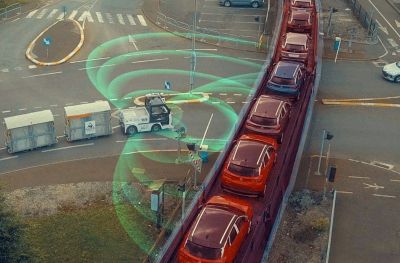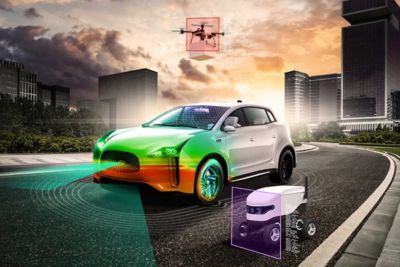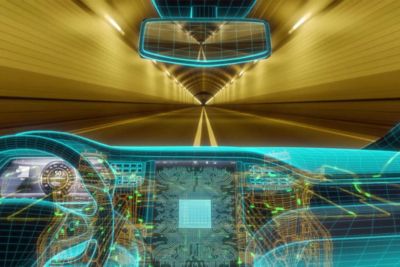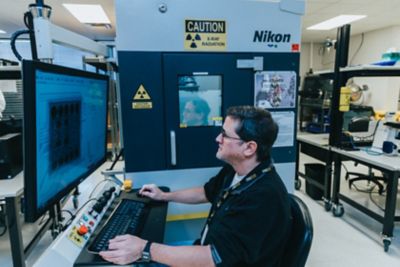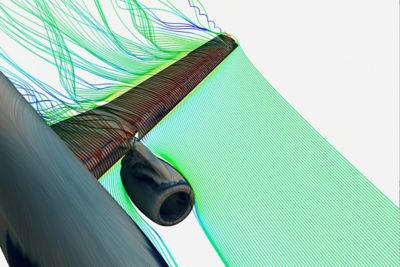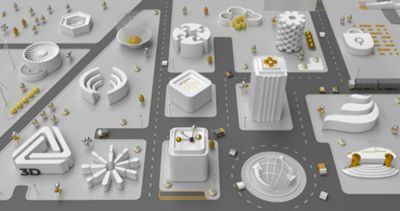TOPIC DETAILS
What is Eco Design?
Eco design is an approach that takes the sustainability and environmental consideration of a product at every stage of its life — from the product design and manufacturing process stages to its ability to be reused — and directly builds them into the design. Eco design takes into account the life of a new product and the impact its lifespan will have on future life cycles. Eco-designed products often include extra design requirements to balance trade-offs to achieve the ideal balance of performance and technical functionality vs. sustainability.
There are many factors that are considered when designing more sustainable and eco-friendly products, including:
- What is the product’s lifetime, and what will happen at its end of life? Can the product be designed to enable disassembly to replace worn parts (i.e., life extension), and is there a system in place to recover products at end of life?
- What are the environmental impacts of the materials and processes used at different manufacturing stages of a product (energy usage, CO2 footprint, water usage, etc.)? Can new materials and processes outside the company's preferred materials and suppliers be used instead?
- Are manufacturers promoting energy efficiency through renewable energy, or are fossil fuels used to manufacture the product?
- What is the carbon footprint of the product?
- What are the main contributors (e.g., parts, transport, product usage, etc.), and which can be changed to maximize reduction?
- Are the intended raw materials sustainable, or are there eco-friendlier options (e.g., higher recycled content, use of green energy, or use of new green processes)?
These questions can be asked during the design and product development stages to ensure a product is designed with sustainable principles. It’s always best to look at these questions early in the design cycle. Change is often not considered until it’s too late, so a preemptive approach is the most efficient way of designing sustainable products.
With new regulations coming into place, the value chain is adopting new metrics that will impact the supply chain and push each tier to disclose and improve the sustainability metrics of their products. This is already happening with Registration, Evaluation, Authorisation, and Restriction of Chemicals (REACH) regulations and will become even more critical in the future, so it must be addressed sooner rather than later.
ESPR: A Regulatory Framework For Eco Design
The Ecodesign for Sustainable Products Regulation (ESPR), formally known as the EU Eco Design Directive, is a regulatory framework that is used alongside Corporate Sustainability Reporting Directive (CSRD) reporting requirements to promote the sustainability of products in the European Union (EU).
ESPR covers multiple aspects of eco design, including:
- Improving product durability, reusability, upgradability, and repairability to extend the life of a product
- Making products more energy and resource efficient through lower energy consumption
- Avoiding materials that contain substances that inhibit circularity
- Reusing materials in future products to promote a circular economy and the use of fewer natural resources
- Increasing the recycled content of materials used in a product
- Making products easier to remanufacture and recycle
- Reducing environmental and carbon footprints in a product
- Improving the availability of information regarding product sustainability to promote transparency in the supply chain.
ESPR came into force in July 2024, so it is a relatively new framework still subject to changes and further development. Because it’s a framework, it does define specific goals, but it provides a way for companies to examine how to extend the life of their products and improve their environmental impact across the entire product life cycle. Concrete rules will be adopted in the future on a product-by-product basis or for groups of products with similar characteristics.
The Core Principles of Eco Design
The main principle of eco design is to consider the environmental aspects involved in product development and reduce the environmental impact of a product while retaining its technical function. There are many metrics that govern eco design:
- Carbon footprint of the materials and processes
- Water usage
- Energy efficiency
- The amount of wasted material during production
- Reuse or ability to be recycled
- Number of resources used
- Regulatory compliance
- The generation of pollution
These all contribute to creating a product with a lower carbon dioxide equivalent (CO2-eq) and embodied energy, consequently reducing its environmental impact.
Balancing Performance, Cost, and Sustainability in Eco Design
One of the main challenges of eco design is the trade-off between product performance, cost, and sustainability. Factors that impact end performance and properties of the product include:
- Material selection
- Material shape
- Different manufacturing processes
Changing these factors can lead to changes in performance that must be accounted for if the product is to become more sustainable. Changing the material it is developed from also potentially changes the supply chain, which has a bearing on overall cost.
This trade-off bridges a middle ground in which product performance meets set requirements with some level of sustainability achieved. Because one product's life cycle looks different from another, the process of setting up an eco-design framework is unique to each product.
Companies are often constrained by the processes and manufacturing equipment available, which is one factor that determines how sustainable the product will be. The type of equipment may limit the materials used to manufacture the product and constrain what material geometries can be fabricated.
Material-led Eco Design Trade-offs
Material-led eco design is an important aspect of the design process. Material choice is an easy way to increase performance or sustainability. Many materials are eco-friendly, while others are high-performance materials, and others straddle both properties with a trade-off.
For example, materials such as cellulose, lignin, chitin, and other natural polymers are more environmentally friendly than synthetic polymers when designing electronic devices like flexible electronics and wearables. However, synthetic materials usually offer better mechanical and thermal performance for many products. The solution is natural-synthetic hybrid materials: By combining natural and synthetic components, the composite structure achieves a balance in performance and improves sustainability compared to using synthetic materials alone.
Material shape is also very important in eco design, as it can improve the performance of sustainable materials depending on the application. Optimizing the shape of a material through simulation and modeling before manufacturing enables peak loading stresses in the material to be identified. Once identified, the geometry can be optimized to improve material performance and extend the product life cycle.
Eco Design Benefits and Considerations
There are different design considerations required when taking an eco-design approach. Many trade-offs must be considered during the design and optimization stages, but sustainability is often overlooked until late in the process because most companies aren’t equipped for sustainable manufacturing.
The main benefits of eco design are:
- Positive environmental impact
- Contributing to reducing climate change effects
- Reducing waste in society
- Competitive advantage by offering more sustainable products
The Biggest Barrier to Eco Design: Lack of Data and Tools
Many companies understand the need to build sustainable processes into the design, but they often lack the data, expertise, and tools necessary to assess the environmental impact of different materials and processes. Many suppliers don’t provide environmental impact data, and companies may lack concrete sustainability objectives or face resistance from leadership, leaving eco design efforts to fall by the wayside.
Many companies recognize the need for change only at the end of the manufacturing cycle, often due to environmental, social and governance (ESG) stipulations, CSRD requirements, or simply a lack of information earlier in the process. At this point, replacing one material with another is often too costly, as doing so would require reworking and reoptimizing the product to ensure the same technical specifications were met.
Eco design is a priority for many companies, and simulation can help in optimizing their designs for environmental friendliness. Reference databases are available for companies that don’t receive primary data from their facilities or suppliers, making it easier to perform an eco analysis.
One example is the Ansys Materials Universe dataset, which contains performance, cost, and environmental data for more than 4,000 generic grades of engineering materials. This resource enables companies to evaluate performance, cost, and environmental impact during the design stage, before a decision is reached on which material to use.
How Product Digital Passports Could Help Information Scarcity
In the near future, product digital passports will help companies obtain information about the eco-friendliness of their supply chain much faster and easier. Digital passports are digital records of the materials used in a product and include information on a material’s origins, properties, end-of-life options, and environmental impact.
The rollout of digital passports will begin with batteries, as they contain rare earth metals that can significantly impact the environment if not disposed of correctly. Digital passports will support circularity tracking and provide transparency on the environmental footprint of raw materials used in a product. Digital passports are not currently mandatory, but companies at all points in the supply chain should be prepared for their arrival.
Eco Design Supports a Circular Economy
Eco design complements a circular economy, as it actively avoids the creation of single-use products that have no end-of-life options other than disposal. While a product’s value is destroyed at its end of life in a linear economy, its value is retained in a circular economy, which prioritizes recycling and reuse over remanufacturing. Consider this report from corporate strategy and finance company McKinsey, which shows that companies that choose to advance ESG priorities in their growth strategies often outperform their peers.
A product’s environmental footprint is largely determined during the design phase. Once a design is finalized, it can’t be easily changed. In the early stages, materials, design, and manufacturing processes can all be adjusted to align with circular economy principles. Choosing recyclable materials and designing for disassembly determines the downstream steps that govern whether the product is environmentally friendly and reusable. It’s important for manufacturers to get their product design right the first time to avoid unnecessary costs and delays.
The Role of Simulation in Eco Design
Because 80% of a product’s design is determined in the early design stages, it’s important to examine what potential trade-offs must be made to improve its sustainability.
This is where simulation is vital. It’s much easier to virtually examine a model of a product and change the material type and shape than it is to make changes to physical prototypes in a trial-and-error approach. Simulations can show users the benefits of different material or shape configurations, as well as the percentage of recycled content in a product. It can help you understand manufacturing tolerances and restrictions. This produces the most optimized product based on the desired mechanical, thermal, or electronic performance and sustainability factors.
Using simulation helps companies save both time and money in the development cycle and navigate any potential design changes before a physical prototype is made. Ansys offers a range of simulation tools like Ansys Discovery software, Ansys Mechanical software, and Ansys LS-DYNA software to help you design and simulate complex products. They are supported by data management tools such as the Ansys Granta product suite for materials data and Ansys Minerva software for simulation process and data management (SPDM).
Ansys also provides optimization tools like Ansys optiSLang software to help you determine potential trade-offs between technical performance, sustainability, and cost considerations for eco design. This data can be used throughout the entire product development process and life cycle to meet both design and sustainability requirements. Simulation can also model and optimize the manufacturing process, keep track of individual maintenance schedules using Ansys Twin Builder software, and calculate the manufacturing process’s energy usage.
Learn more about how Ansys can help you develop environmentally friendly products while avoiding multiple rounds of physical prototyping. Get in touch with our technical team today.
